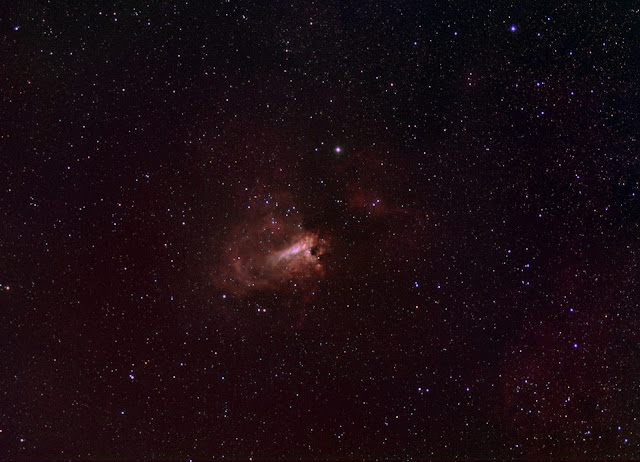Click on an image to get a closer view.
This image shows the narrow time-slot for imaging M17 between two rooftops. There is a 12 degree window giving me only 40 minutes of imaging time.
M17 rising from the rooftop. In this image the camera was set to times two bin mode to increase the sensitivity. The total exposure time was 60s.
This image was taken using an 80mm refractor, a Vixen Atlux mount and an Atik 383L mono CCD camera. The camera was set to times two bin mode, capturing 60s sub-frames. The total exposure time was 10 minutes for each Red, Green and Blue filter.
This is a bi-colour image of M17 using H-alpha for Red and OIII for Blue. The total exposure times were 20 minutes for each filter, capturing 60s sub-frames.
This is an image of M17 using the Hubble palette, with total exposure times of 20 minutes for each filter, using 60s sub-frames with the camera set on times two bin mode.






















